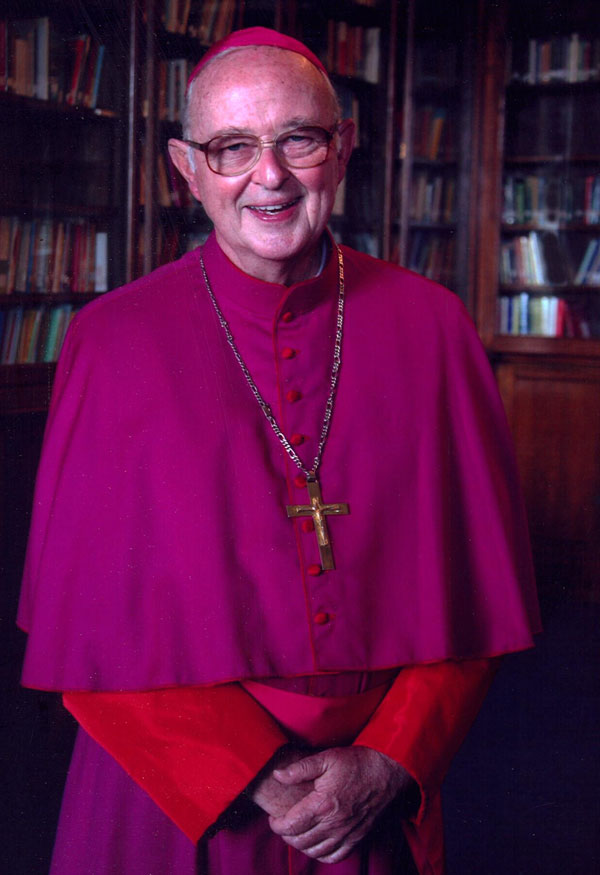
St. John gives us a very different account about the Jesus of Nazareth whom he first met on the shore of the Lake of Galilee. He doesn’t give us any details about when or where Jesus was born. Instead, he wants to tell us ‘something’ very special about this child who was born in Bethlehem. We believe in it as the ‘mystery’ of the Incarnation. John opens the message of his First Letter in this way:‘Something…we have heard and seen with our eyes, which we have watched and touched with our hands, the Word of life. That life was made visible; we saw it and are giving our testimony… so that you too may be in union with us, as we are in union with the Father and with his Son Jesus Christ’ (I John, 1: 1-3). It is very similar to the opening of his Gospel: ‘In the beginning was the Word; the Word was with God and the Word was God. And the Word was made flesh’.
In the Bible, the word ‘flesh’ refers to the weaknesses of our human nature. But we also have a soul or a ‘spirit’ in that we are created in the image and likeness of God our Creator. Remember the words Jesus spoke to his disciples at the Agony in the Garden: ‘the spirit is willing but the flesh is weak’. When God became man, he took on our human nature (flesh) while still remaining a divine person.
John spent the latter years of his life as an exile on a Greek island called Patmos. I try to picture John as he wrote those words – ‘something’ we have heard, seen, watched and touched with our hands – the Word of life. That life was made visible. John was not only one of the twelve apostles. He was also one of the special three often chosen by Jesus (Peter, James and John). Then he was also known as the ‘beloved disciple’. As such, it seems he had a special closeness or relation with Jesus among the twelve. In the solitude of his surroundings on the island where he lived, he must have pondered over and over again his experiences as a first hand witness to the life of the Master: his words and his example. There, he fully became convinced that this man Jesus of Nazareth was more than just a man. In other words, the child born in Bethlehem on that first Christmas night was both the Son of God and the son of Mary. The Word that was with God since the beginning of time was also the Word made flesh.John wanted to clarify this teaching because some members of the young Christian churches he had founded were led astray by false teachers who denied the mystery of the Incarnation i.e. that Jesus had both a human as well as a divine nature.
The Christmas story has also been told without the use of any words! I refer to the Christmas crib – the initiative of St. Francis of Assisi. How appropriate; he also taught his companions: ‘preach the Good News at all time; if necessary, use words!’As the proverb says: ‘example speaks louder than words’. St. Francis assembled the first crib in a cave on the side of a mountain in the year 1223. A large crowd of local people came to take part in the ceremony of the first crib.
An image of the Christ child lying in a manger of straw and two live animals (an ox and a donkey) were its only occupants. The idea of the crib was to help Christians to imagine the scene of Jesus’ birth on that first Christmas. In this way, the story of his birth would become more vivid or alive to the minds and the hearts of the farmers and the shepherds who lived in the nearby village of Greccio. One of St. Francis companions wrote an account of his experiences of that night: ‘simplicity was honored; poverty was exalted; humility was praised.’
Today, Christians all over the world have followed the example of St. Francis. Cribs have been assembled both in Churches as well as homes. We might call him the ‘genius of simplicity’. Looking at the tiny figure of the Christ child, we gaze in wonder at the mystery that confronts us: heaven is joined to earth and earth to heaven. The son of Mary, a helpless child, is also the Son of God.Emmanuel – God is with us. We can also go back to the message of St. John: ‘something’ we have heard and seen with our eyes; which we watched and touched with our hands – the Word of Life. And that Word was made visible; and we are telling you so that you can be in union with us as we are with God the Father and Jesus Christ His Son.
What can we do? There is just one thing: take time to visit a crib (at home or in Church) during the 12 days of Christmas. Other than that, just bow down in adoration and marvel at the mystery of God becoming man. Yes, just bow down in silence – no need to say anything or do anything. Listen in your heart to the angels singing: Glory to God in the highest; and on earth, peace among men of goodwill. And remember those words: simplicity was honored; poverty was exalted; and humility was praised’.
Yalla, sunyu Borom, nyungi la gerem ngir sa dom Yesu Krista, ki di fengyal sa har kanam chi nyun.
You, Yalla Borom yermande, mi nyu wotu sasu nyu sone te new dole. Sunyu reyrey, nga ut nyu be gis nyu, te fehal sunyu hol.
Nanyu Yesu Bur I jama ji dimali, ndah nyu sahal jama chi sunyu bir hol, chi bir sunyu njobot, chi sunyu reu ak chi bir aduna si sepa. AMIN.

